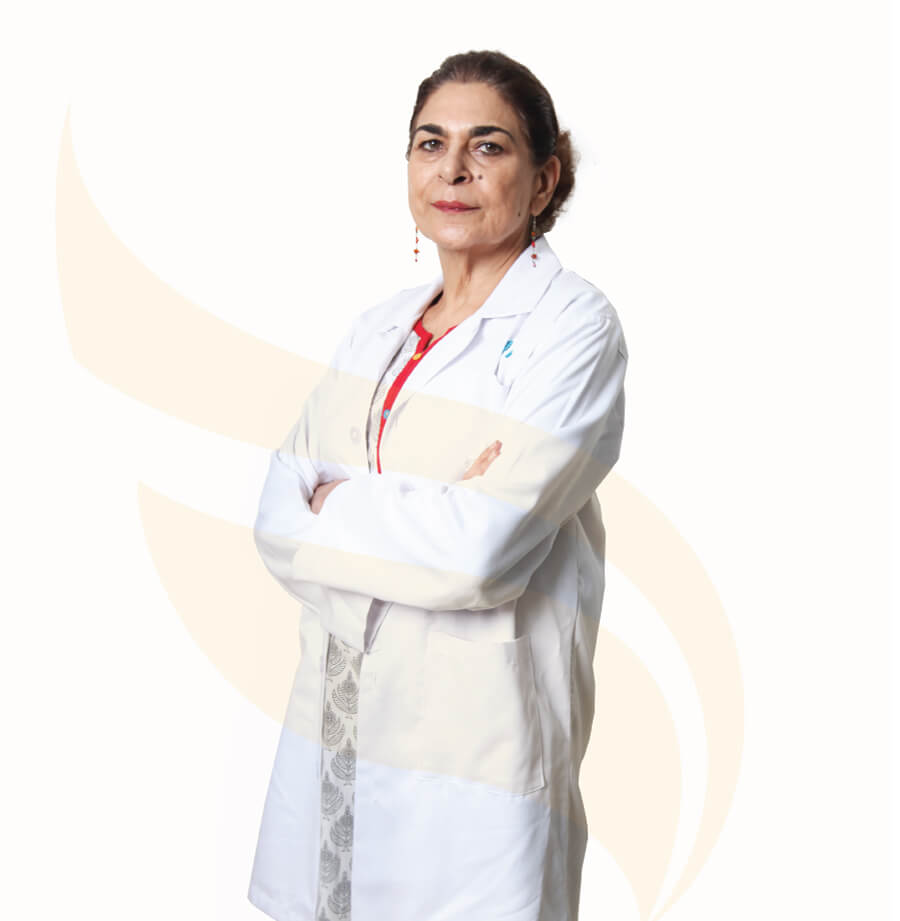Could not find what you are looking for?
- Treatments & Procedures
- Pediatric Tracheostomy- Types, Procedure, Cost In India, Risks, Recovery and Benefits
Pediatric Tracheostomy- Types, Procedure, Cost in India, Risks, Recovery and benefits
Best Hospital for Pediatric Tracheostomy in India
What is Pediatric Tracheostomy?
Pediatric tracheostomy is a surgical procedure that involves creating an opening in the trachea, or windpipe, to facilitate breathing. This procedure is particularly important for children who have difficulty breathing due to various medical conditions. The tracheostomy allows air to enter the lungs directly, bypassing any obstructions or abnormalities in the upper airway.
The primary purpose of a pediatric tracheostomy is to provide a secure airway for children who may be unable to breathe adequately through their nose or mouth. This can be due to a range of issues, including congenital abnormalities, severe respiratory infections, or trauma. By establishing a direct airway, healthcare providers can ensure that the child receives sufficient oxygen, which is crucial for their overall health and development.
Conditions that may necessitate a pediatric tracheostomy include severe asthma, chronic obstructive pulmonary disease (COPD), or conditions that cause swelling or blockage in the airway, such as croup or epiglottitis. In some cases, children with neuromuscular disorders may also require a tracheostomy if their muscles are too weak to support normal breathing.
The procedure itself typically involves a surgeon making an incision in the neck and inserting a tube into the trachea. This tube, known as a tracheostomy tube, can be adjusted or replaced as needed. Pediatric tracheostomy is usually performed in a hospital setting, often under general anesthesia, and is considered a safe and effective way to manage severe respiratory issues in children.
Why is Pediatric Tracheostomy Done?
Pediatric tracheostomy is recommended when a child exhibits symptoms that indicate a compromised airway or inadequate breathing. These symptoms can vary widely depending on the underlying condition but often include:
- Difficulty breathing or shortness of breath
- Stridor, which is a high-pitched wheezing sound during breathing
- Frequent respiratory infections
- Inability to clear secretions from the airway
- Severe sleep apnea
- Cyanosis, or a bluish tint to the skin, indicating low oxygen levels
The decision to perform a pediatric tracheostomy is typically made after careful evaluation by a team of healthcare professionals, including pediatricians, pulmonologists, and otolaryngologists. The procedure is usually considered when other less invasive treatments have failed or when a child’s condition is expected to be long-term.
In some cases, a tracheostomy may be performed as an emergency procedure, such as in the case of severe trauma or anaphylaxis, where immediate airway access is critical. In other situations, it may be planned in advance for children with chronic conditions that require long-term respiratory support.
Indications for Pediatric Tracheostomy
Several clinical situations and diagnostic findings can indicate the need for a pediatric tracheostomy. These include:
- Obstructive Airway Conditions: Children with conditions that cause significant obstruction in the upper airway, such as congenital anomalies (e.g., laryngomalacia or tracheomalacia), may require a tracheostomy to ensure adequate airflow.
- Neuromuscular Disorders: Conditions like muscular dystrophy or spinal muscular atrophy can weaken the muscles involved in breathing, making it difficult for the child to maintain a clear airway. A tracheostomy can provide a stable airway and assist with ventilation.
- Chronic Respiratory Failure: Children with chronic lung diseases, such as cystic fibrosis or bronchopulmonary dysplasia, may develop respiratory failure that necessitates a tracheostomy for long-term management.
- Severe Sleep Apnea: In cases where a child experiences severe obstructive sleep apnea that does not respond to other treatments, a tracheostomy may be indicated to ensure continuous airflow during sleep.
- Prolonged Ventilator Support: For children who require long-term mechanical ventilation due to respiratory failure or other medical conditions, a tracheostomy can facilitate easier and more comfortable ventilation.
- Trauma or Emergency Situations: In cases of severe trauma to the neck or airway, a tracheostomy may be performed as an emergency measure to secure the airway and allow for adequate breathing.
The decision to proceed with a pediatric tracheostomy is made based on a comprehensive assessment of the child’s medical history, current health status, and the potential benefits and risks associated with the procedure. It is essential for parents and caregivers to have open discussions with their healthcare team to understand the rationale behind the recommendation and what to expect during and after the procedure.
Types of Pediatric Tracheostomy
While there are various techniques for performing a tracheostomy, the primary distinction lies in the approach taken by the surgeon. The two main types of pediatric tracheostomy procedures are:
- Surgical Tracheostomy: This is the most common method, where a surgeon makes an incision in the neck and directly accesses the trachea. This approach allows for precise placement of the tracheostomy tube and is typically performed in a controlled hospital environment.
- Percutaneous Tracheostomy: This technique involves using a needle and dilators to create an opening in the trachea without a large incision. It is often used in critically ill patients who require immediate airway access. Percutaneous tracheostomy can be performed at the bedside, usually in an intensive care unit setting.
Both methods have their advantages and are chosen based on the child’s specific needs, the urgency of the situation, and the surgeon’s expertise. Regardless of the technique used, the goal remains the same: to provide a safe and effective airway for the child.
In conclusion, pediatric tracheostomy is a vital procedure that can significantly improve the quality of life for children with severe respiratory issues. Understanding the reasons for the procedure, the indications, and the types available can help parents and caregivers navigate this challenging situation with greater confidence and knowledge. As we move forward in this series, we will explore the recovery process after pediatric tracheostomy and the ongoing care required to ensure the best outcomes for these young patients.
Contraindications for Pediatric Tracheostomy
While pediatric tracheostomy can be a life-saving procedure for many children, there are specific conditions and factors that may make a patient unsuitable for this intervention. Understanding these contraindications is crucial for healthcare providers and families alike.
- Severe Coagulopathy: Children with bleeding disorders or those on anticoagulant therapy may not be ideal candidates for tracheostomy. The risk of excessive bleeding during and after the procedure can pose significant complications.
- Infection at the Site: If there is an active infection in the neck or surrounding areas, performing a tracheostomy may increase the risk of spreading the infection or complicating the healing process.
- Severe Anatomical Abnormalities: Children with significant congenital anomalies of the airway or neck may not be suitable for tracheostomy. These abnormalities can complicate the procedure and increase the risk of complications.
- Uncontrolled Respiratory Distress: In cases where a child is experiencing severe respiratory distress that cannot be stabilized, the risks of performing a tracheostomy may outweigh the benefits. Stabilization of the child’s condition is essential before considering the procedure.
- Lack of Support: A tracheostomy requires ongoing care and management. If a family is unable or unwilling to provide the necessary support and care post-procedure, it may not be advisable to proceed.
- Terminal Illness: In cases where a child has a terminal illness and a poor prognosis, the focus may be on palliative care rather than invasive procedures like tracheostomy.
- Severe Neurological Impairment: Children with significant neurological deficits may not benefit from a tracheostomy if their overall prognosis is poor or if they are unable to participate in rehabilitation.
- Parental or Guardian Refusal: If the parents or guardians do not consent to the procedure after being fully informed of the risks and benefits, the procedure cannot be performed.
Understanding these contraindications helps ensure that pediatric tracheostomy is performed only when it is truly necessary and beneficial for the child’s health and quality of life.
How to Prepare for Pediatric Tracheostomy
Preparing for a pediatric tracheostomy involves several important steps to ensure the safety and success of the procedure. Here’s what families can expect in the lead-up to the surgery.
- Pre-Procedure Consultation: Families will meet with the surgical team, including the pediatric surgeon and anesthesiologist. This is an opportunity to discuss the procedure, ask questions, and understand the risks and benefits.
- Medical History Review: The healthcare team will review the child’s medical history, including any previous surgeries, current medications, and allergies. This information is crucial for planning the procedure.
- Physical Examination: A thorough physical examination will be conducted to assess the child’s overall health and suitability for surgery. This may include checking the airway, neck, and respiratory status.
- Diagnostic Tests: Several tests may be ordered before the procedure, including:
- Blood Tests: To check for clotting factors and overall health.
- Imaging Studies: X-rays or CT scans may be performed to evaluate the airway and surrounding structures.
- Pulmonary Function Tests: These tests assess how well the lungs are working and can help determine the need for a tracheostomy.
- Anesthesia Consultation: The anesthesiologist will evaluate the child to determine the best anesthesia plan. This may involve discussing any previous reactions to anesthesia and ensuring the child is healthy enough for sedation.
- Pre-Operative Instructions: Families will receive specific instructions regarding food and drink restrictions before the procedure. Typically, children are advised not to eat or drink for several hours prior to surgery to reduce the risk of aspiration.
- Emotional Preparation: It’s important to prepare the child emotionally for the procedure. Explain what will happen in simple terms, reassure them, and encourage them to express any fears or concerns.
- Post-Procedure Planning: Families should also discuss post-operative care, including how to care for the tracheostomy site, signs of complications to watch for, and follow-up appointments.
By following these preparation steps, families can help ensure a smoother experience for their child during the pediatric tracheostomy procedure.
Pediatric Tracheostomy: Step-by-Step Procedure
Understanding the step-by-step process of a pediatric tracheostomy can help alleviate concerns and prepare families for what to expect. Here’s a breakdown of the procedure.
- Pre-Operative Preparation: On the day of the procedure, the child will be taken to the operating room. They will be monitored closely, and an intravenous (IV) line will be placed to administer medications and fluids.
- Anesthesia Administration: The anesthesiologist will administer general anesthesia, ensuring the child is completely asleep and pain-free during the procedure. Monitoring equipment will be attached to track the child’s vital signs.
- Positioning: The child will be positioned comfortably on the operating table, typically lying on their back with the neck slightly extended to provide better access to the trachea.
- Incision: The surgeon will make a small incision in the neck, usually just below the Adam’s apple. This incision allows access to the trachea.
- Tracheostomy Creation: The surgeon will carefully dissect through the layers of tissue to reach the trachea. Once located, a small opening will be made in the trachea, and a tracheostomy tube will be inserted. This tube provides an airway for breathing.
- Securing the Tube: The tracheostomy tube will be secured in place, and the surgeon will ensure that it is positioned correctly. The area around the tube will be cleaned and dressed to prevent infection.
- Monitoring: After the procedure, the child will be moved to the recovery area, where they will be closely monitored as they wake up from anesthesia. Vital signs will be checked regularly to ensure stability.
- Post-Operative Care: Once the child is awake and stable, they will be transferred to a hospital room for further monitoring. Healthcare providers will provide instructions on how to care for the tracheostomy tube and the surrounding area.
- Education for Families: Before discharge, families will receive education on how to manage the tracheostomy at home, including cleaning, suctioning, and recognizing signs of complications. This comprehensive training is often provided by a specialized tracheostomy team, including nurses and respiratory therapists, and ongoing support from a multidisciplinary team will be crucial for long-term care.
By understanding the step-by-step process of pediatric tracheostomy, families can feel more prepared and informed about their child’s care.
Risks and Complications of Pediatric Tracheostomy
Like any surgical procedure, pediatric tracheostomy carries certain risks and potential complications. It’s important for families to be aware of these to make informed decisions and to recognize any issues that may arise.
Common Risks
- Infection: The risk of infection at the incision site or within the trachea is a common concern. Proper care and hygiene can help minimize this risk.
- Bleeding: Some bleeding is expected, but excessive bleeding can occur. Monitoring and prompt intervention can address this issue.
- Airway Obstruction: Mucus buildup or displacement of the tracheostomy tube can lead to airway obstruction. Regular suctioning and monitoring are essential.
- Accidental Decannulation: This occurs when the tracheostomy tube comes out unintentionally. Families should be trained on how to replace the tube if this happens.
Less Common Risks
- Tracheal Injury: There is a small risk of injury to the trachea during the procedure, which can lead to complications.
- Pneumothorax: This is a rare but serious condition where air leaks into the space between the lung and chest wall, potentially causing lung collapse.
- Subcutaneous Emphysema: Air can escape into the surrounding tissues, leading to swelling and discomfort. This usually resolves with appropriate care.
- Long-term Dependence on Tracheostomy: Some children may require long-term or permanent tracheostomy, which can impact their quality of life and require ongoing management.
Rare Complications
- Tracheal Stenosis: Narrowing of the trachea can occur over time, leading to breathing difficulties. Regular follow-up is important to monitor for this condition.
- Fistula Formation: An abnormal connection between the trachea and surrounding structures can develop, requiring further intervention.
- Aspiration: There is a risk of food or liquid entering the lungs, which can lead to pneumonia. Careful management of feeding and swallowing is essential.
While the risks associated with pediatric tracheostomy are important to consider, many children benefit significantly from the procedure. With proper care and monitoring, the majority of complications can be managed effectively, allowing children to thrive and improve their quality of life.
Recovery After Pediatric Tracheostomy
The recovery process following a pediatric tracheostomy is crucial for ensuring the child’s health and comfort. Typically, the initial recovery period lasts about one to two weeks, during which the child will be closely monitored in a hospital setting. This allows healthcare professionals to manage any immediate complications and provide necessary support.
Expected Recovery Timeline
- Hospital Stay (1-2 weeks): After the procedure, the child will remain in the hospital for observation. During this time, healthcare providers will monitor vital signs, ensure the tracheostomy tube is functioning properly, and assess the child’s ability to breathe comfortably.
- Home Care (2-6 weeks): Once discharged, parents or caregivers will need to continue providing care at home. This includes regular cleaning of the tracheostomy site, changing the tracheostomy tube as instructed, and monitoring for any signs of infection or complications.
- Follow-Up Appointments: Regular follow-up visits with the pediatrician or an ENT specialist are essential. These may also involve pulmonologists, speech therapists, and specialized tracheostomy clinics to help track the child’s progress and make any necessary adjustments to their care plan, including planning for decannulation (tracheostomy removal) when appropriate.
Aftercare Tips
- Tracheostomy Care: Clean the tracheostomy site daily with saline or a prescribed solution. Change the tracheostomy tube as directed by the healthcare provider, usually every few days or as needed.
- Humidity: Use a humidifier in the child’s room to keep the air moist, which can help prevent mucus buildup and make breathing easier.
- Monitoring: Keep an eye out for any signs of distress, such as difficulty breathing, increased coughing, or changes in skin color. If any of these occur, seek medical attention immediately.
- Diet: After the procedure, children may need to adjust their diet. Soft foods are often recommended initially, and hydration is crucial. Consult with a healthcare provider for specific dietary recommendations.
Resuming Normal Activities
Most children can gradually return to their normal activities within a few weeks after the procedure, depending on their overall health and recovery progress. Light activities can typically resume within two weeks, while more vigorous activities, such as sports, may take longer. Always consult with the child’s healthcare provider before allowing them to engage in physical activities.
Benefits of Pediatric Tracheostomy
Pediatric tracheostomy offers several significant health improvements and quality-of-life outcomes for children with respiratory challenges. Here are some of the key benefits:
- Improved Breathing: For children with obstructed airways or chronic respiratory issues, a tracheostomy can provide a direct airway, allowing for easier and more effective breathing.
- Reduced Work of Breathing: By bypassing the upper airway, children can breathe more easily, which can reduce fatigue and improve overall energy levels.
- Enhanced Quality of Life: Many children experience a significant improvement in their quality of life post-tracheostomy. They may be able to participate in activities they previously could not due to breathing difficulties.
- Better Secretion Management: A tracheostomy allows for easier suctioning of secretions, which can help prevent infections and improve lung function.
- Facilitated Communication: With the right interventions, many children can learn to speak again after a tracheostomy, enhancing their ability to communicate effectively.
- Increased Safety: For children with severe respiratory issues, a tracheostomy can provide a safer alternative to prolonged intubation, reducing the risk of complications associated with long-term mechanical ventilation.
Pediatric Airway Management: Tracheostomy vs. Alternative Approaches
When a child has a compromised airway, several approaches can be used to ensure they can breathe effectively. Pediatric tracheostomy is a definitive surgical solution for providing a secure and long-term airway. However, in many cases, other less invasive or acute interventions are employed, either as a temporary measure, a bridge to tracheostomy, or a long-term alternative depending on the underlying condition. Understanding these different management strategies is crucial for parents.
| Feature | Pediatric Tracheostomy (Surgical) | Endotracheal Intubation (ETT) | CPAP/BiPAP (Non-Invasive Ventilation) | Acute Surgical Airway (Cricothyroidotomy) |
|---|---|---|---|---|
| Incision Size | Small (neck incision) | No incision (tube through mouth/nose) | No incision (mask) | Small (emergency neck incision) |
| Recovery Time | Moderate (days in hospital, weeks for adaptation) | N/A (recovery from underlying illness/sedation) | N/A (ongoing management, not a recovery from procedure) | Acute (recovery from emergency, then definitive airway) |
| Hospital Stay | Typically 1-2 weeks initially | Inpatient (often ICU, for underlying illness) | Varies (can be inpatient or outpatient) | Acute (emergency setting) |
| Pain Level | Moderate postoperative pain (managed with medication) | Discomfort from tube, managed with sedation/analgesia | Mild discomfort (from mask pressure, air dryness) | Moderate (emergency procedure, then pain control) |
| Risk of Complications | Infection, bleeding, airway obstruction (mucus), accidental decannulation, tracheal injury, tracheal stenosis (long-term) | Vocal cord injury, tracheal stenosis, pneumonia, tube blockage/dislodgement | Skin irritation, air leaks, stomach distension, aspiration (rare) | Vocal cord injury, tracheal injury, bleeding, infection |
| Primary Goal | Secure, long-term airway bypass for obstruction/respiratory failure | Temporary airway for acute respiratory failure/anesthesia | Support breathing non-invasively for sleep apnea, respiratory insufficiency | Emergency airway when intubation fails |
| Definitive Treatment | Yes, for airway access | No, temporary | No, supportive | No, temporary emergency solution |
| Impact on Speech | Initially difficult; possible with speaking valves/capping | Prevents speech while in place | Allows speech when mask removed | Prevents speech initially |
| Long-Term Use | Yes, for months to years, or permanently | Short-term (days to weeks); prolonged use increases risks | Yes, can be long-term home use | No, converted to tracheostomy or removed |
| Cost | Moderate to high (surgery, supplies, home care) | Varies (part of critical care costs) | Lower (equipment rental, supplies) | Varies (emergency procedure costs) |
Cost of Pediatric Tracheostomy in India
The average cost of a pediatric tracheostomy in India ranges from ₹50,000 to ₹1,50,000. Price can vary based on several key factors:
- Hospital: Different hospitals have varying pricing structures. Renowned institutions like Apollo Hospitals may offer comprehensive care and advanced facilities, which can influence the overall cost.
- Location: The city and region where the Pediatric Tracheostomy is performed can affect costs due to differences in living expenses and healthcare pricing.
- Room Type: The choice of accommodation (general ward, semi-private, private, etc.) can significantly impact the total cost.
- Complications: Any complications during or after the procedure can lead to additional expenses.
At Apollo Hospitals, we prioritize transparent communication and personalized care plans. Apollo Hospitals is the best hospital for Pediatric Tracheostomy in India because of our trusted expertise, advanced infrastructure, and consistent focus on patient outcomes.
We encourage prospective patients seeking a Pediatric Tracheostomy in India to contact us directly for detailed information about the procedure cost and assistance with financial planning.
With Apollo Hospitals, you get access to:
- Trusted medical expertise
- Comprehensive aftercare services
- Excellent value and quality care
This makes Apollo Hospitals a preferred choice for Pediatric Tracheostomy in India.
FAQs About Pediatric Tracheostomy
What should I expect during the recovery period?
During recovery, your child will be monitored closely for any complications. You can expect some discomfort, but pain management will be provided. Regular follow-ups will be necessary to ensure proper healing.
How can I care for the tracheostomy site at home?
Clean the site daily with saline or a prescribed solution. Change the dressing as needed and watch for signs of infection, such as redness or discharge.
What dietary changes should I make for my child post-surgery?
Initially, soft foods and plenty of fluids are recommended. Gradually reintroduce regular foods as tolerated, but consult your healthcare provider for specific guidance.
When can my child return to school?
Most children can return to school within a few weeks, but it’s essential to consult with your healthcare provider to determine the right timing based on your child’s recovery.
Can my child participate in sports after a tracheostomy?
Light activities can usually resume within a few weeks, but contact sports or vigorous activities should be avoided until cleared by a healthcare provider.
How often will the tracheostomy tube need to be changed?
The tracheostomy tube typically needs to be changed every few days or as directed by your healthcare provider. Regular cleaning is also essential.
What signs of infection should I look for?
Watch for increased redness, swelling, or discharge at the tracheostomy site, as well as fever or increased respiratory distress. Contact your healthcare provider if these occur.
Will my child be able to speak after the procedure?
Many children can learn to speak again after a tracheostomy, especially with speech therapy. Discuss communication options with your healthcare provider.
How can I help my child cope with the emotional aspects of having a tracheostomy?
Encourage open communication about their feelings and provide reassurance. Support groups and counseling can also be beneficial for both the child and family.
What should I do if the tracheostomy tube becomes dislodged?
If the tube comes out, follow your healthcare provider’s emergency instructions. Keep a spare tube on hand and ensure that caregivers are trained in emergency procedures.
Can my child swim with a tracheostomy?
Swimming is generally discouraged until your child is fully healed and cleared by a healthcare provider. Discuss any plans for swimming with your child’s doctor.
How can I manage mucus buildup?
Use a humidifier to keep the air moist, and suction the tracheostomy tube as needed to clear mucus. Consult your healthcare provider for additional strategies.
What should I do if my child has difficulty breathing?
If your child experiences difficulty breathing, seek medical attention immediately. It’s essential to have an emergency plan in place.
Are there any restrictions on travel after a tracheostomy?
Travel is generally possible after recovery, but consult your healthcare provider for specific recommendations and necessary precautions.
How can I ensure my child’s safety at home?
Create a safe environment by keeping the area around the tracheostomy clear of hazards. Ensure that all caregivers are trained in tracheostomy care and emergency procedures.
What follow-up care will my child need?
Regular follow-up appointments with a pediatrician or ENT specialist are essential to monitor your child’s progress and adjust their care plan as needed.
Can my child receive vaccinations after a tracheostomy?
Yes, vaccinations are generally safe after a tracheostomy. Discuss any concerns with your healthcare provider to ensure your child is up to date on their immunizations.
What resources are available for families of children with tracheostomies?
Many organizations provide support and resources for families, including educational materials, support groups, and online forums. Your healthcare provider can recommend specific resources.
How can I help my child adjust to their new normal?
Encourage your child to express their feelings and provide emotional support. Engage in activities that they enjoy and help them maintain a routine to foster a sense of normalcy.
What should I do if my child has a cold or respiratory infection?
Monitor your child closely and consult your healthcare provider for guidance on managing symptoms and any necessary adjustments to their care plan.
Conclusion
Pediatric tracheostomy is a significant procedure that can greatly improve the quality of life for children with respiratory challenges. It offers numerous health benefits, including improved breathing and better management of secretions. If you are considering this procedure for your child, it is essential to speak with a medical professional who can provide personalized advice and support. Understanding the recovery process, aftercare, and potential benefits can help you make informed decisions for your child's health and well-being.












